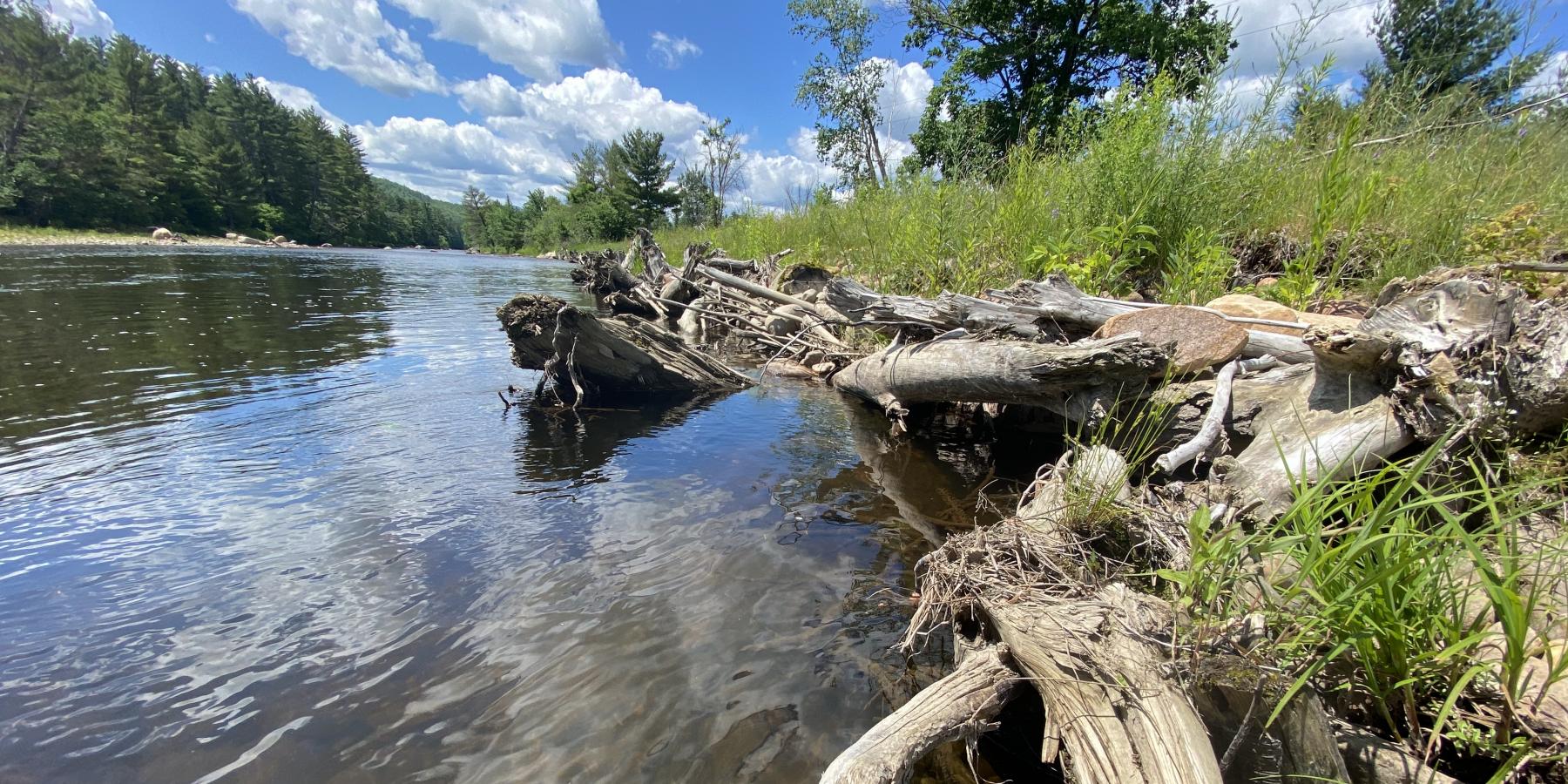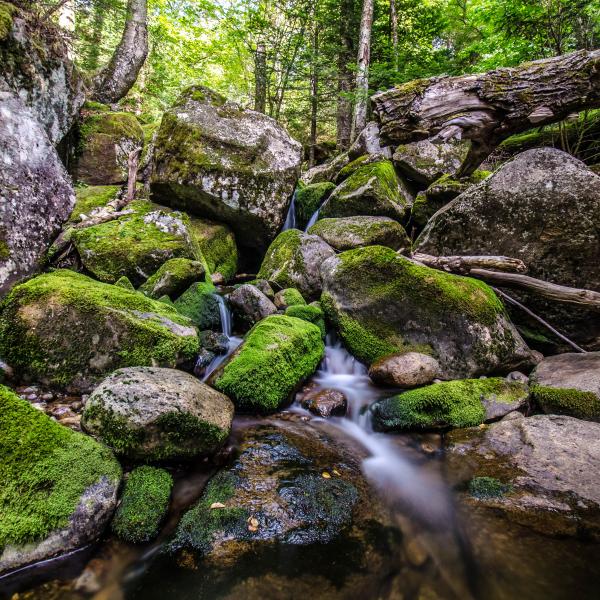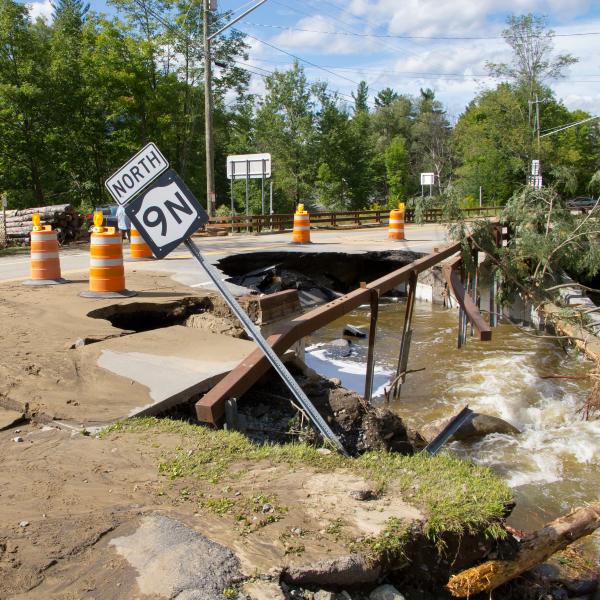Our approach to stream restoration rebuilds the self-sustaining capacity of a stream. We work on damaged sections of the river. While rivers can heal themselves, they need significant amounts of time and space to do so. Where human infrastructure cannot be moved to allow the river to heal, we can intervene. Using only native stone, trees, and biodegradable fabric, we repair the channel and banks based on careful science-based assessment (e.g., hydrology, hydraulics, geomorphology) and using mathematical precision. We use adaptive management tools to continuously assess what we create, and we support habitat enrichment at each site in subsequent years. The result, over time, is a beautiful flowing channel of oxygen-rich riffles and cool, deep pools with thick stands of native trees and understory plants along the banks. It's good for the river, for water quality, for habitats and biodiversity, (many enhancements also store carbon), and it's the foundation for healthy, vibrant Adirondack communities. It doesn't stop flooding, but in places where human infrastructure must exist in proximity to a river, it reduces unpredictability and allows human communities to build a resilient economic base and flourish alongside natural communities.
Properly restored, streams and rivers maintain their form and function over time, building and rebuilding the riffles, pools, banks, and floodplains that are essential to ecosystems, wildlife, water quality, fisheries, communities, recreation, and public health. We've found that getting stream restoration right, restoring self-sustaining streams -- whether that is right-sizing culverts, ensuring streams have access to floodplains, protecting or replanting riparian buffers, or restoring stream channels -- requires patience, rigorous science, engaged landowners & communities, and a willingness to work at multiple scales.
Thinking Like a River
A stream is in equilibrium when slope and channel characteristics adjust themselves to create a velocity that will transport the water, sediment, and debris supplied by a watershed. A stable stream will neither aggrade nor degrade its channel, but will transport the flows and sediment coming from its watershed while maintaining channel dimension, pattern, and profile. When channel shaping variables change, whether by natural or human intervention, the stream will adjust its shape—meandering, adjusting its sinuosity or slope, or shifting its channel—to re-establish equilibrium. Channel shaping variables include water velocity, roughness of the bed, slope, width, depth, discharge, size of sediment and debris, and the amount of sediment.
The goal of stream restoration is to recreate a stable channel based on the hydrology and hydraulics that shape natural channels. This is commonly thought of as returning a stream to its natural, pre-disturbance condition. Frequently, however, the channel shaping variables have been modified by the land use changes that initiated the disequilibrium in the first place. It is therefore impossible to achieve a pristine condition. Instead, natural stream designs restore stability and habitat based on the potential of a stream and the present day realities of the communities and infrastructure surrounding it.
Left on their own and unimpeded by human intervention, most streams will restore their pattern, dimension, and profile in time. But that time might be 10, 50, or 100 years or more. In many natural or wilderness areas, such a time frame and the movement and changes of the river over land is acceptable. In areas where human use or management shape the landscape and limit the river's path, communities with resources at stake do not have time for the river to repair itself or the tolerance for its encroachment on their homes, roads, and businesses. That's where our natural restoration aproaches come into play. Designing to maximize a stream's potential, then implementing projects to achieve it, provides numerous benefits to the Ausable watershed and our local economy:
- Stable restored banks reduce sediment loads and bind phosphorous and other nutrients, limiting their release into waterways and their potential for downstream damage in storms.
- Since bare eroding banks are fertile ground for terrestrial invasive species, bank restoration and accompanying riparian restoration curb potential for invasives to gain a foothold.
- Fully restored streams with lush riparian buffers protect and shade aquatic habitats, cooling stream waters that are habitat for our native brook trout and the ecological diversity that is essential to our economy.
- Restoration methods that prioritize restoring stream morphology maximize a stream's potential to manage flood flows, reducing unpredictibility in storms and threats to human infrastructure.
*For more information on natural channel design, read David Rosgen's "Applied River Morphology," (1996) a technical handbook for stream restoration and Luna Leopold's eloquent "A View of the River" (1994). AFC relies on the assessment standards detailed in A Funtion-Based Framework (Harman et al 2012) for identifying when and where to use natural channel design techniques. It is also an excellent techinical manual for understanding how streams work. Our stream restoration methodology is summarized here.



